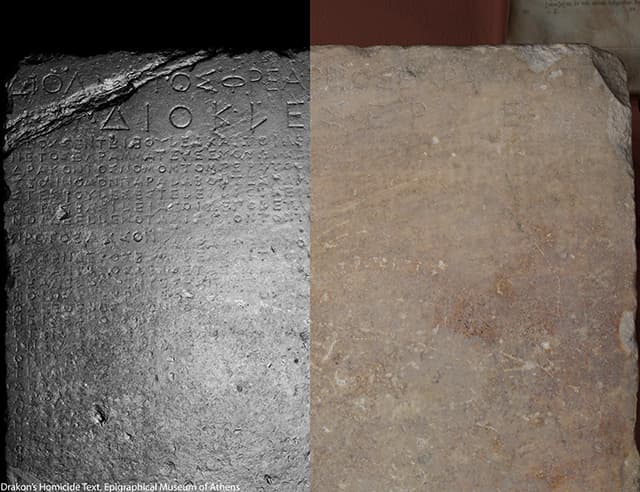Islamic State recently destroyed the 2,000-year-old Temple of Bel in the ancient city of Palmyra, Syria
[Photo credit: © Joel Carillet/iStock]
The alert has been sounded by archaeologists who are poised to send 10,000 specially designed digital cameras to ‘willing volunteers’ in the Middle East.
Their mission, should the volunteers choose to accept it, will be to photograph precious artefacts amid fears that Islamic State will destroy further archaeological treasures, such as those recently obliterated in Palmyra, Syria.
Conservationists hope to eventually use the images to print 3D models of archaeological sites and antiquities, should they be lost to further Islamic State attacks.
Furthermore, crucial information such as the date, time and location of the photos will be used to combat organisations who fund their activities by selling plundered treasures over the internet, and falsely claiming they have been legitimately sourced.
It is hoped police will use the database to track stolen artefacts, to counter claims by those selling an object that it was obtained at a date long before 2015, for example.
The Million Image Database Project is the brainchild of the Institute for Digital Archaeology in Oxford.
In a letter to The Times, published on 28 August, project bosses compared the mission to a ‘digital take on the Monuments Men’. The Monuments Men is a 2014 movie – starring George Clooney – that centred on a mission to rescue art masterpieces from Nazi thieves.
The Million Image Database Project is spearheaded by Roger Michel, a long-time reader of Amateur Photographer magazine and executive director at the Institute.
In his letter to The Times, Michel wrote: ‘Palmyra is rapidly becoming the symbol of Isis’s cultural iconoclasm. If Isis is permitted to rewrite the history of a region that defined global aesthetic and political sensibilities, we will collectively suffer a costly and irreversible defeat. But there is hope.’
It’s a race against time. The plan is to capture up to 20 million 3D images of ‘at-risk’ objects and architecture by the end of 2016.
Amateur Photographer has learned that camera-equipped drones may also be used to photograph ancient sites.
The modified cameras to be used on the ground will be manufactured to order, cost £20 each and are designed to be easy to use.
Crucially, they contain built-in Wi-Fi and GPS, enabling images and location data to be transferred to mobile phones and uploaded to the database – an open-source archive to be held at the Institute for the Study of the Ancient World at New York University.
Storing the images on memory cards is not an option, as these are physical objects that also risk being destroyed, explained Ben Altshuler, field director at the Institute for Digital Archaeology.
He said the project has already won much support since it was first publicised.
Altshuler told Amateur Photographer that he has received ‘dozens of responses’, including one from a museum in Iraq.
‘The [response] is more than we ever could have hoped for.’

An example of previous work by the Institute for Digital Archaeology, showing what it can do with ancient artefacts. This is a ‘reflectance transformation image’ of the Drakon Homicide text from the Epigraphical Museum of Athens, alongside the almost illegible original tablet [Photo credit: © Ben Altshuler, Institute for Digital Archaeology]
Key to the project’s success will be training people to use the technology.
‘I’m looking into going out to some of the sites to work out how we can make the technology and process as streamlined as possible,’ said Altshuler.
The cameras – which use the project’s own patented technology – will be despatched to the Middle East ‘in a matter of weeks,’ although Altshuler was reluctant to reveal the exact destinations for obvious reasons.
‘We can’t disclose the sites… part of what we are doing is staying one step ahead [of Islamic State]. We don’t want to put any lives in danger.’
Although the project was publicised last week, it has, in fact, been in the pipeline for at least nine months, revealed Alexy Karenowska, director of technology at the Institute, who helped design the camera.
In an interview with Amateur Photographer, Karenowska, a physicist at Magdalen College, Oxford, said project organisers would be ‘foolish’ to ignore the risks involved and are proceeding with caution.
‘There is some inherent risk, but our job is not to increase this risk by virtue of the fact that the project has had publicity.’
She explained there are many archaeologists who work at the sites on a daily basis, and stressed that it’s not about someone dressed in a ‘catsuit’ on a stealth mission out in the field.
Details of the cameras are shrouded in secrecy, though.
The security of the camera’s manufacturer, distributor and others in the supply chain may be threatened if images of its physical appearance were to enter the public domain.
Karenowska would only divulge that the camera is a 10-million-pixel ‘pocket-sized’ digital compact and ‘a relatively low-tech unit’.
‘We are extremely worried that if an image of the camera was widely spread… it would put people in danger,’ she said.
Karenowska said that, similar to traditional 3D cameras, the device will capture two images at slightly different angles – to create a 3D image that can be worked on later in post-processing.
The camera also shoots normal 2D photos.
‘It’s a point-and-shoot, the kind of thing anyone can use,’ added Karenowska.
Although some of the 3D cameras will have a macro function, the project is not about capturing minute details. Its prime job will be to create 3D images of objects and the sites where they lay.
‘We aim to collect one million images by the end of this year,’ said Karenowska, adding: ‘The public response has been overwhelming.’
Academic institutions will help distribute the cameras.
‘We have partnered with [heritage organisation] Unesco to put together a “hitlist” of sites and dealing with local people on the ground.’
Asked whether the public can get involved in the picture-taking, Karenowska replied: ‘Anyone who is willing can get involved.’
The task is immense and, as Altshuler conceded: ‘No number of images is going to replace an object.’








